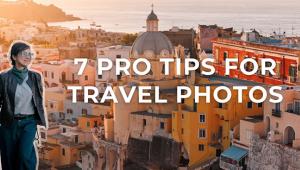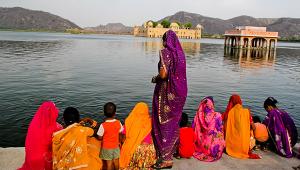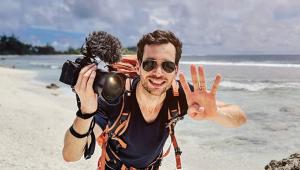Going Into Motion: Photographer Makes the Leap to Shooting Video for Travel Project

Photos © Blaine Harrington
Years ago I took a photograph of prayer flags at a Buddhist monastery in Bhutan, and as I was shooting the image I wished I could also shoot video to record the movement of the flags and the sound they made as they danced in the wind.

I never forgot that moment or let go of the idea it planted, and on a trip to Asia last fall, carrying with me a camera that was capable of video capture, I was ready to give motion pictures a try—not because I saw them as a new area of income for me as a travel photographer (though it might work out to some extent with stock video clips), but because I really wanted to see what kinds of stories I could tell with video.
I worked with the camera at home to test it before the trip, but I didn’t take a lot of time perfecting a video technique. My main concern was a balance of time; simply, how do I fit video into my travels while doing the still photography that was the prime reason I’d be traveling? A friend gave me good advice: Do your still work first, and then if a location, scene, or event is there to be further explored, take video footage.
Another concern was the creative thinking that comes along with the switch from stills to video. When I shoot stills I feel I’ve got to tell the whole story in one picture, to explain the situation in one frame. With video, the story develops and the shots are created to follow the story line. The fact that there’s not a single shot to tell the story calls for a different way of thinking about the organization of the shots. I sort and arrange my still images when I edit them; with video, shot follows shot, and although I knew I could edit, as a video beginner I wanted to keep that to a minimum. So I had to think about sequence—establishing shots, medium close-ups, close-ups, and details—to explain the action and the situation. What I realized was that at the very least, a mental storyboard of what I wanted to achieve was a good way to start. And as a beginner, I would avoid complex story lines; on this trip, simple stories would be the best.

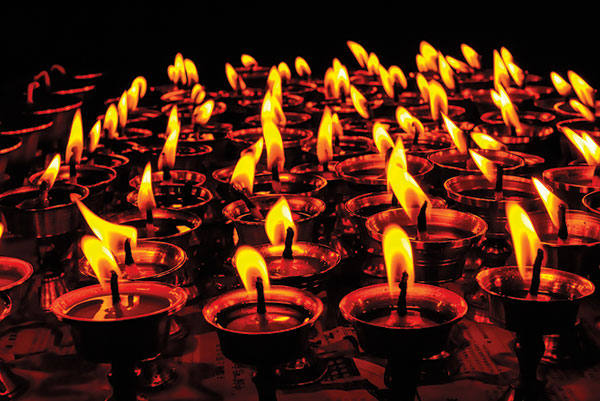
I also decided to take the easy way when it came to sound. I’d edit out the ambient sound and lay a soundtrack over the edited video. It was too early in the game for me to get into an external microphone or an audio recorder. I did use two accessories, though. I knew I’d benefit from a viewing loupe (seeing details and checking focus can be a problem when viewing through the camera’s LCD), so I purchased a Hoodman 3-inch screen loupe and the straps needed to attach it to the camera. I also used my variable neutral density filter to keep the shutter speed at around 1/50 second when I was shooting outdoors.
Most of the time I shot video using my tripod, though I was often able to hand hold the camera and keep it pretty steady as I walked along for some shots. I also used a trick if a tripod wasn’t practical in a specific situation and I needed some extra support: I tied a length of tent cord to the knob of a quick-release plate, attached the knob to the camera’s tripod socket and then put one foot on the dangling cord, essentially clamping the camera to the floor. Then, holding the camera very tight to my body, I became the tripod.
One of the best things about shooting video with my D-SLR was that all my favorite lenses were at my disposal, and I used the same glass I chose for stills, like the 16mm fisheye and my 14-24mm, 24-70mm, and 70-200mm zooms.
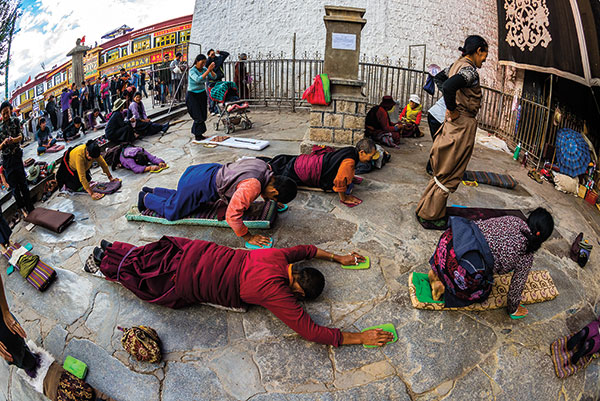

Back home I edited the video footage on my Mac using iMovie, a relatively easy, though limited, program. You can see the result of my video efforts here. The video has also been embedded at the bottom of this story.
That video represents a first step for me along the learning and creative curve. The future may include ambient sound, some select accessories, and advanced editing (people who really get into video prefer more sophisticated programs, like Final Cut Pro), but for my first time out I followed what I’d recommend to anyone thinking of trying out motion pictures in their travels: don’t get in over your head or reach too far on a first effort; keep things simple and straightforward; and remember that as a dedicated still photographer you bring a lot to the adventure—you know how to deal with light, how to frame and compose, how to work with people.
From all the movies and TV shows we grew up watching and those we watch today, we get ideas and are familiar with the techniques to express them. We know what a pan is, what a reveal is, what an establishing shot, medium close-up, and close-up sequence look like. In a sense, we’ve all gone to film school. Pick up a digital camera with video capability, and I think you’ll be amazed at what ideas come to you from the memories of movies you’ve seen. And ideas drive video images just as they do stills.
The finished video is below. For more info, visit my website: www.blaineharrington.com.
